Cape Horn or bust!
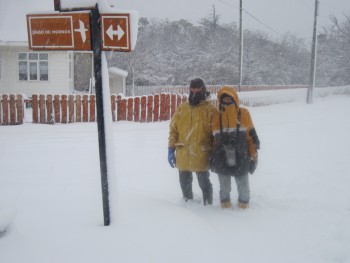
Once upon a time, almost 27 years ago, a young and ridiculously carefree artist set out across the Atlantic Ocean. Skippering the brand-new, tupperware yacht which carried this maiden was a carefree Master Mariner – also young, but with a six year circumnavigation of the globe in his wake. The vessel had barely crossed Biscay before these two young and carefree hearts began to beat as one, but she was about half way across the pond by the time the skipper had the nerve to make his proposal: “O’ beautiful Pussy, O’ Pussy my love,” (or words to that effect) said he, “How would you like to sail with me to Tierra del Fuego and the Straits of Magellan? How do you fancy a trip around the Horn?”
“You bet!” said the young and ridiculously naive artist.
And so it was that they set out.
And last week they finally made it.
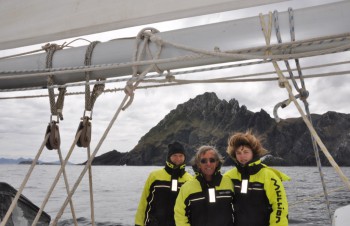
Cape Horn or bust, it was – and, as ‘regular readers’ will know, we did bust the first boat that we brought down to these wild and windy latitudes. (If you’re not a regular, you can read all about it here.) Even in the immediate aftermath of that little set-back we were completely unstoppable – never once have we wavered in our single-minded determination to get ourselves down to Tierra del Fuego – but we are fully aware of the fact that it doesn’t look that way from the outside. From the outside it looks as if we’d got cold feet or changed our minds, because rather than cut straight across to our avowed destination we’ve been bumbling about like a bee. The thing that many people don’t understand, in these days of instant gratification, is that to journey is just as important as to arrive. The fact that we had a goal didn’t mean that we had to rush at it!
As I’ve said many times, so far as we are concerned, cruising is a lifestyle. It’s also an environmentally-friendly means of transport and, when the weather plays nicely, a very pleasant way to pass the time, but those things are simply the icing and the candles. It’s the freedom to wander whither we will and hang out wherever we whim which is our cake. Thus it was that our travels from the Cape of Good Hope to the Horn took us via the Med and the Caribbean and took us 15 years.
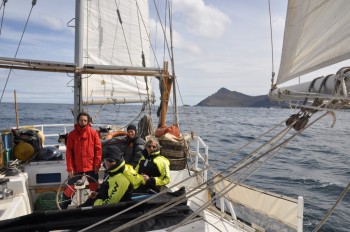
Oh, and then there’s the money thing. Cruising is a very inexpensive lifestyle, particularly if you build your own boat using second-hand materials, but although there’s no rent to pay and no need for fancy clothes or a car, even boating bums have to eat. The need to feed the family cost us a few years and took us to places where we wouldn’t ordinarily have chosen to live. They were far from being the best miles in this long journey – looking back, I see them as a hurricane-force storm that we nearly didn’t weather… But nowadays I don’t do a lot of looking back; nowadays I aim to stay in the present moment – the only really, truly thing that we have.
Cape Horn. So what’s the big deal about this lump of rock? This was the question put to me after we rounded the Cape by a German film-maker. I think he was hoping for some kind of spiel about the notorious weather, so I dropped in a mention of our previous misadventure and I said that the Horn was the sailor’s Everest – but in reality, to compare a quick trip around the Horn with an assault on that lofty peak is to vastly exaggerate both the peril and the glory. If we’d come blasting round the Southern Ocean from Australia it would have been a different story. Then we really would have scaled the summit and earned the title of Cape Horners – assuming that we lived to tell the tale. As it is, our voyage was not the bold, hit and run mission of a vessel running the gamut of the storms; we were more like mice creeping out of a hole and then scurrying back again. To quote a French friend who charters down here and makes such forays on a regular basis, “Every time we do it, we steal the Cape; we never earn it.”
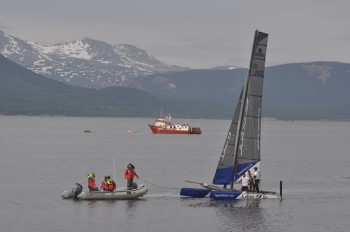
Hundreds of vessels have been lost rounding the Horn, and for two reasons: Firstly, in the ‘days of sail’ there were no weather forecasts; knowledge of what was coming next depended on the ‘old man’s’ ability to read the barometer and his knowledge of the way the winds behave in this region. Secondly – and much more importantly – at that time navigation depended on the sighting of the sun, and it’s not every day that the sun shows his face.
It’s really as simple as that. If they could have seen the storms approaching then the ancient mariners could have taken shelter – provided their vessels were sufficiently manageable to be worked in amongst the islands which make up this extremity of the continent – but only if they had seen the sun and knew their position. As it was, many of those old ships spent weeks battling their way westward, or rolling eastward, with only the most approximate idea of their location on this Earth. As a result, they daren’t risk heading north towards the unknown land, and they just had to accept whatever the Fates hurled at them.
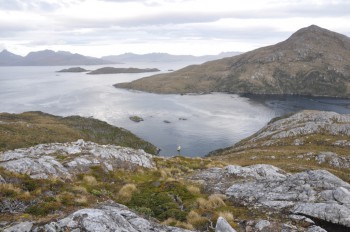
The storms still roll unabated around Cape Horn. Modern marvels haven’t made the place any less dangerous; but they have enabled us to identify the lull before the next blow. Moreover, with time on our hands and with small, manoeuvrable boats which also boast the advantage of a “Get-me-outta-here!”, infernal combustion engine, we can our pick and choose the perfect moment for a rounding of the Horn.
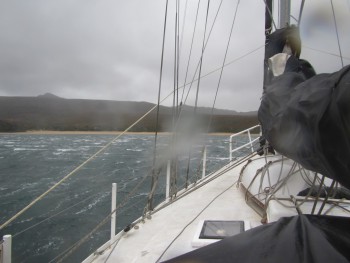
To tell you the truth, so far as we’re concerned the Horn is simply the bottom-most bit of the Americas, and if we want to do a ‘proper’ circumnavigation we have to get round it. We do feel ourselves to be following in the wake of our heroes – of Drake, of Schouten and Le Maire (who were the first to round the Cape by intention), and of Robert Fitz-Roy, Conor O’Brien, Francis Chichester, Bernard Moitessier, Robin Knox-Johnson, Edward Allcard… and others, too numerous to mention. We do have a sense of history, but we’re more inclined towards the geographic relevance of this place.
And besides, just think of all those venues and sights that we’d have missed if we’d taken the short-cut, via the Canal: Itaparica, with its wonderful sand-bar and its marvellous sailing barges; Rio de Janeiro, with its world-class firework display and strange New Year’s customs; the weird wildlife of Ilha Grande; the crazy canoes of Paranaguá. We’d have missed a winter living as river-dwellers in the suburbs of Buenos Aires. We’d have missed seeing tropical rainforests where monkeys hide in the tree-tops, and arid plains with guanaco wandering free. We’d have missed meeting anteaters and alligators, and armadillos and penguins; and we’d have missed meeting loads of good people, including a lovely young lady whose passion is bogs, and our sometime crew-member, Gean.
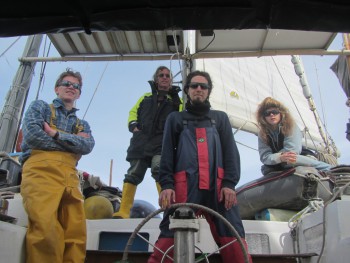
The bog-woman and Gean were both with us as we rounded the Horn – she because she wanted to check-out the boggy-bits of this region, and he because he would gladly follow the Mollymawks – and Roxanne in particular – to the ends of the Earth.
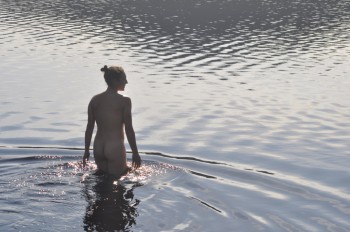
After we’d all become Cape Horners (sort of), Roxanne ceremonially punched a hole in Gean’s ear with a sail-sewing needle and fitted him with a gold ring. Two or three days later, Carolina passed her birthday within sight of the famous cape and celebrated the occasion by swimming naked in an icy-cold mountain lake amongst her beloved bogs. It takes all sorts to make a world.
It turns out that the waters off Cape Horn are not just the world’s most dangerous; they’re also a very interesting cruising ground. Eventually we’ll get round to telling you all about them. And we’ll also share with you our new knowledge of the truly fascinating flora to be found in storm-swept swamps, mires, and carpet bogs…

Love it.